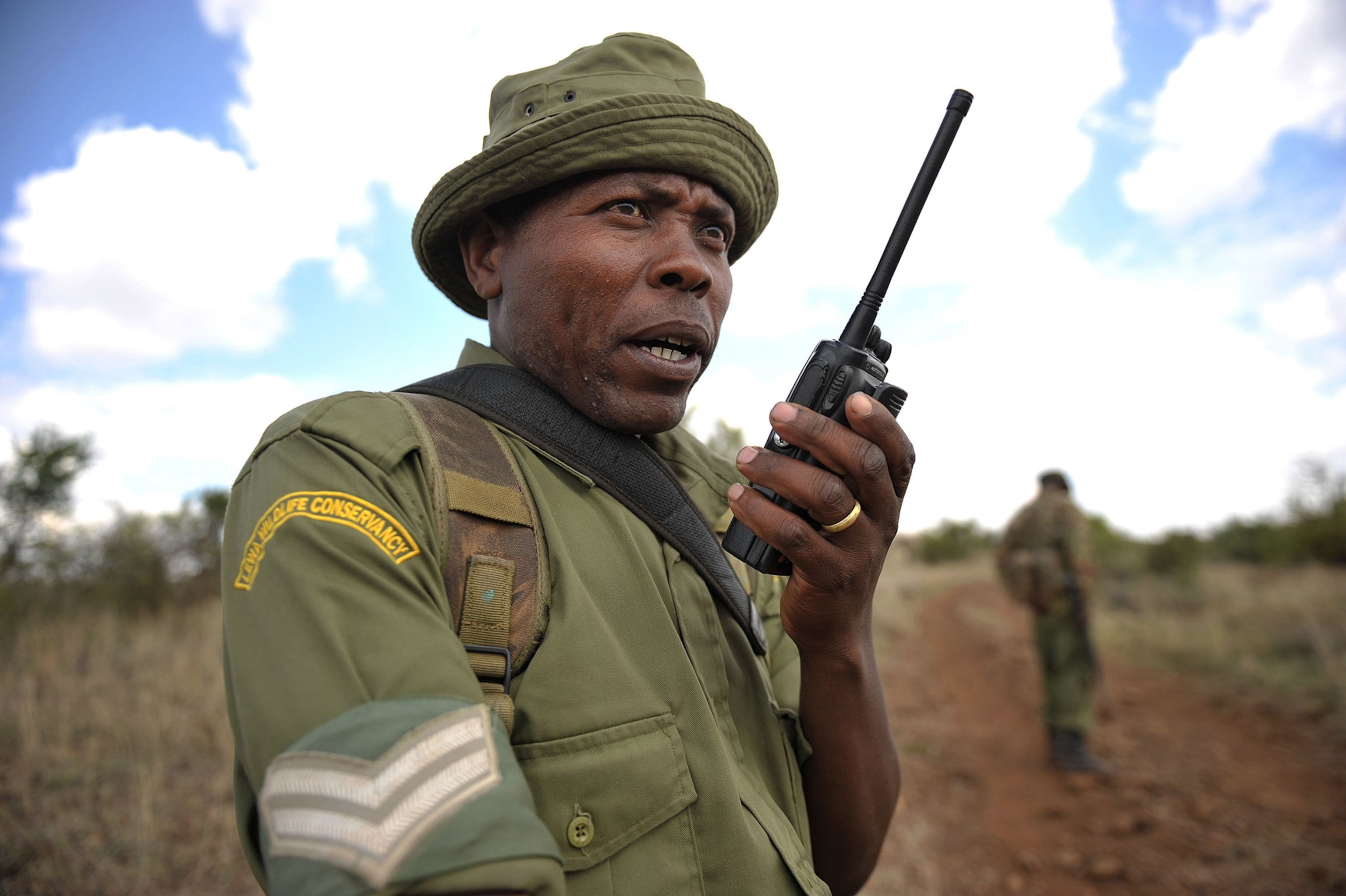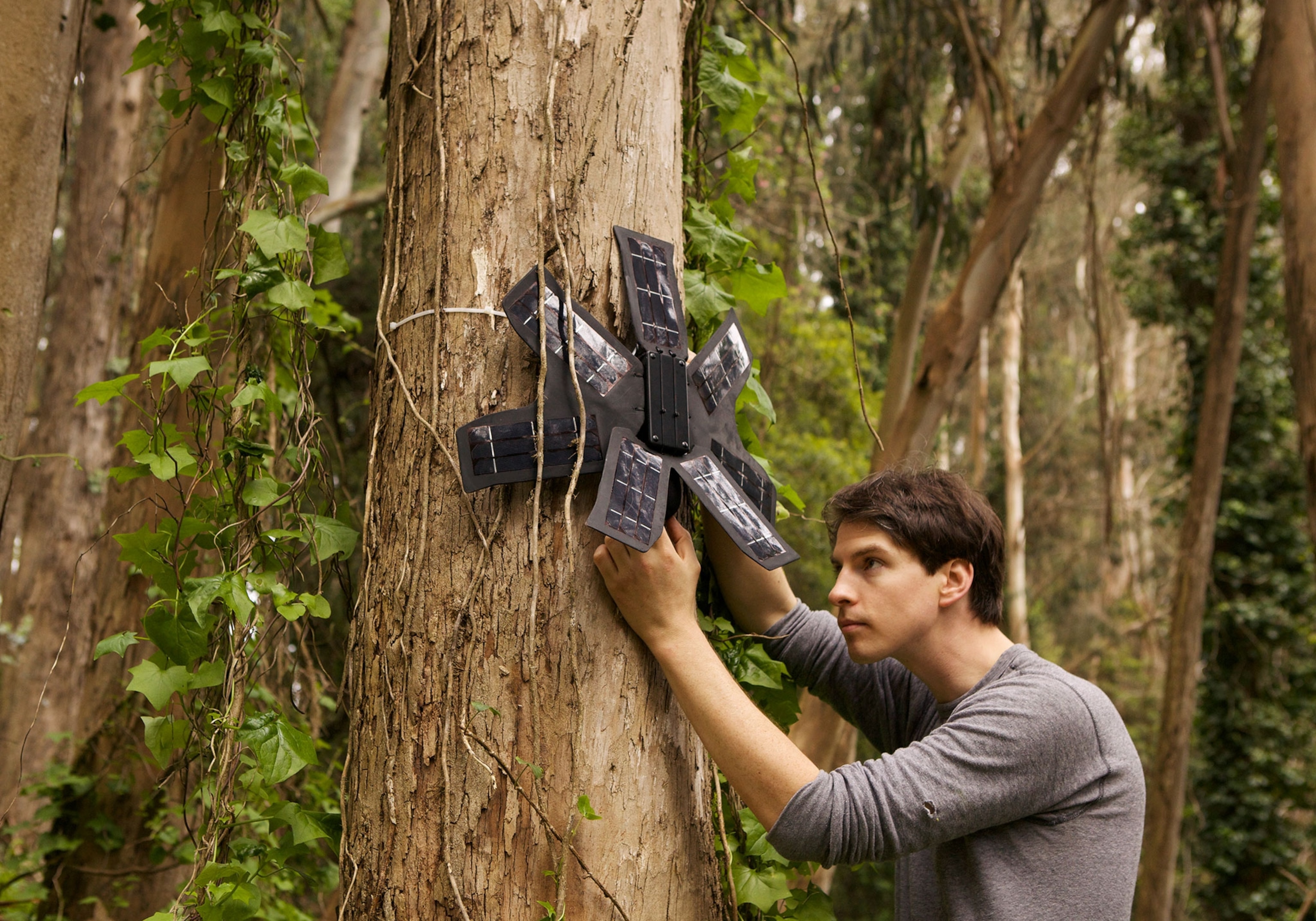
11 Ways Technology Stops Crime Against Endangered Animals
As wildlife smuggling networks get more sophisticated, so do methods to find them and shut them down.
Wildlife smuggling is a global epidemic. Worth billions of dollars a year, the illicit trade is driving animals such as rhinos, elephants, pangolins, abalone, and sharks toward extinction.
With criminal networks getting more sophisticated than ever, new high-tech approaches are being developed to identify them and bring perpetrators to justice. (Read "Why Are Most of Tanzania's Elephants Disappearing?")
National Geographic is partnering with the U.S. Agency for International Development, the Smithsonian, and TRAFFIC, the wildlife trade monitoring network, to support the "Wildlife Crime Tech Challenge," a competition that's awarding multiple prizes of up to $500,000 for innovative techniques to combat animal trafficking.
In the meanwhile, here are 11 of the most promising new technological tools for detecting wildlife crime, nabbing poachers, and stepping up law enforcement:
1. DNA analysis
DNA analysis has proved a game changer in wildlife crime investigation. Pioneered by Samuel Wasser, of the University of Washington, in Seattle, DNA analysis of ivory, when compared with DNA-based mapping of elephant populations, allows investigators to pinpoint the origins of illicit ivory and focus enforcement on high-risk areas.
DNA analysis has proved a game changer in wildlife crime investigation.
DNA barcoding, first developed by researchers at University of Guelph, in Ontario, Canada, allows researchers to identify species from very small fragments of genetic material. The International Barcode of Life project, an initiative of scientists and conservationists in 25 countries, is creating a global DNA barcode library of species.
2. Acoustic traps
Using networks of recycled cell phones outfitted with solar panels and antennas that act as sensors, the Rainforest Connection is tracking illegal logging in Borneo.

The phones, mounted in waterproof cases throughout the forest, record and transmit sounds associated with illegal activity, such as plane or truck engines, chainsaws, explosions, and gunfire, to a cloud-based server for analysis. The devices make it possible to catch illegal loggers in the act of cutting down trees.
3. Thermal imaging
To deal with the challenge of patrolling vast, harsh, and remote landscapes, researchers with the Wildlife Crime Technology Project are testing thermal imagery cameras to remotely track illegal entry into parks and protected areas.
Placed on the perimeter of conservation areas, along roadways and footpaths, the cameras send automatic alerts to rangers when they detect poachers entering a protected area. The cameras’ software enables them to distinguish between natural movements, like swaying branches, and human motion.
4. Advanced analytics and mapping
The Global Database of Events, Language, and Tone (GDELT) project, funded through Google Ideas, tracked broadcast, print, and web media from across the globe for three months to map wildlife crime. The result is an interactive map that allows users to explore media on rhino poaching in South Africa, elk poaching in Canada, wildlife trafficking in Croatia, and overfishing in Brazil.
The HealthMap Wildlife Trade database, developed by Nikkita Patel at the University of Pennsylvania, similarly uses media accounts to track trends in wildlife crime to identify important geographic choke points along the illegal wildlife trade chain to help law enforcement interdict traffickers.
And C4ADS, a non-profit focused on conflict and security worldwide, produces an interactive and constantly updated map that tracks large-scale ivory seizures, ammunition used in poaching, and written reports and other information on ivory, tiger, and timber supply chains. The map and accompanying analysis, freely available to law enforcement and shipping professionals, can help under-resourced conservation organizations fight transnational trafficking syndicates.

5. Spatial monitoring and reporting tool (SMART) and CyberTracker
This free software kit, now used in 120 conservation areas in 27 countries, integrates data from ranger patrols, analyzes local poaching trends, and measures progress in law enforcement to help rangers improve their effectiveness in combating wildlife crime.
Through a partnership with the group CyberTracker, which has developed a handheld tool to capture the knowledge of indigenous trackers, the system incorporates local knowledge of animal behavior and movements to better understand local ecologies.
6. Digital radio
Even simple technology upgrades can make a big difference. In Kenya, the ranger service replaced its two-way radio network, prone to interference and lacking security features, with a digital radio network that allows rangers to communicate securely over long distances, coordinate with headquarters, and respond faster to poaching incidents and illegal park entries.
7. GPS-enabled cameras and smartphones
In India, officials launched an app called Hejje that allows rangers to use smartphones to track tiger movements, as well as notate through instant photo messaging important landscape features such as water levels, forest fires, and suspicious human activity. Park officials can make decisions about what to do in real time.
Simple technology upgrades can make a big difference.
Conservationists from the United States, Canada, and Kenya developed a similar tool for African elephants, who wear GPS smartphone tracking devices that transmit data on the animals’ locations and movements via satellite or local cell phone networks. Researchers are notified when something out of the ordinary occurs, such as when an elephant stops moving for an extended time.
The data can also be used to help wildlife authorities intervene before an elephant raids a farmer’s field or to quickly locate elephants in need of veterinary care.
Illegal, unreported, and unregulated (IUU) fishing, valued at between 10 billion and 23 billion dollars a year, according to the Global Ocean Commission, is depleting Earth’s oceans, threatening entire ecosystems as well as the food security of millions of people.
Illegal fishing is valued at between 10 billion and 23 billion dollars a year.
To better monitor marine environments, the Pew Charitable Trusts partnered with Satellite Applications Catapult to develop the Virtual Watch Room. Using real-time satellite imagery and tracking, the system can identify vessels that are acting suspiciously so authorities can take action to stop illegal fishing.
9. WILDSCAN and other mobile apps
Launched in Vietnam, WILDSCAN is a publicly available app developed to help law enforcement officers identify, handle, and report illegally trafficked wildlife.
The app provides photos and information on critically endangered species that are often trafficked through Asia. It also provides information on the care of wild animals and plants such as their preferred foods or watering requirements to help customs officials safely handle seized wildlife.
Similar apps operate in China (Wildlife Guardian) and Afghanistan (Wildlife Alert). Because they don’t need an Internet connection to work, they’re valuable to conservation authorities and enforcement officials in remote or harsh environments.
10. Wildleaks
Started by the Elephant Action League, this Web site, translated into 16 languages, allows users to anonymously report wildlife crimes all over the world. The site has provided law enforcement and journalists with valuable information on crimes related to ivory, rhino horn, big cats, apes, pangolins, birds, and timber.
California’s CalTIP app is a state-level version.
11. Crowdfunding
Finding enough money to combat wildlife crimes is always a problem, especially in poor countries. Ranger forces and conservationists are turning to crowdfunding sites to pay for tools to fight poachers, from drones to spot poachers from the air to sniffer dogs for uncovering ivory and other banned products at airports to basic needs like anti-poaching training, vehicles, uniforms, and weapons to augment ground patrols.
One organization in Kenya, the David Sheldrick Wildlife Trust (DSWT), supports its elephant orphanage in part through crowdfunding. DSWT rescues and rehabilitates baby elephants in addition to providing mobile veterinary care for wild elephants injured by poachers.
Follow Patricia Raxter on Twitter.








